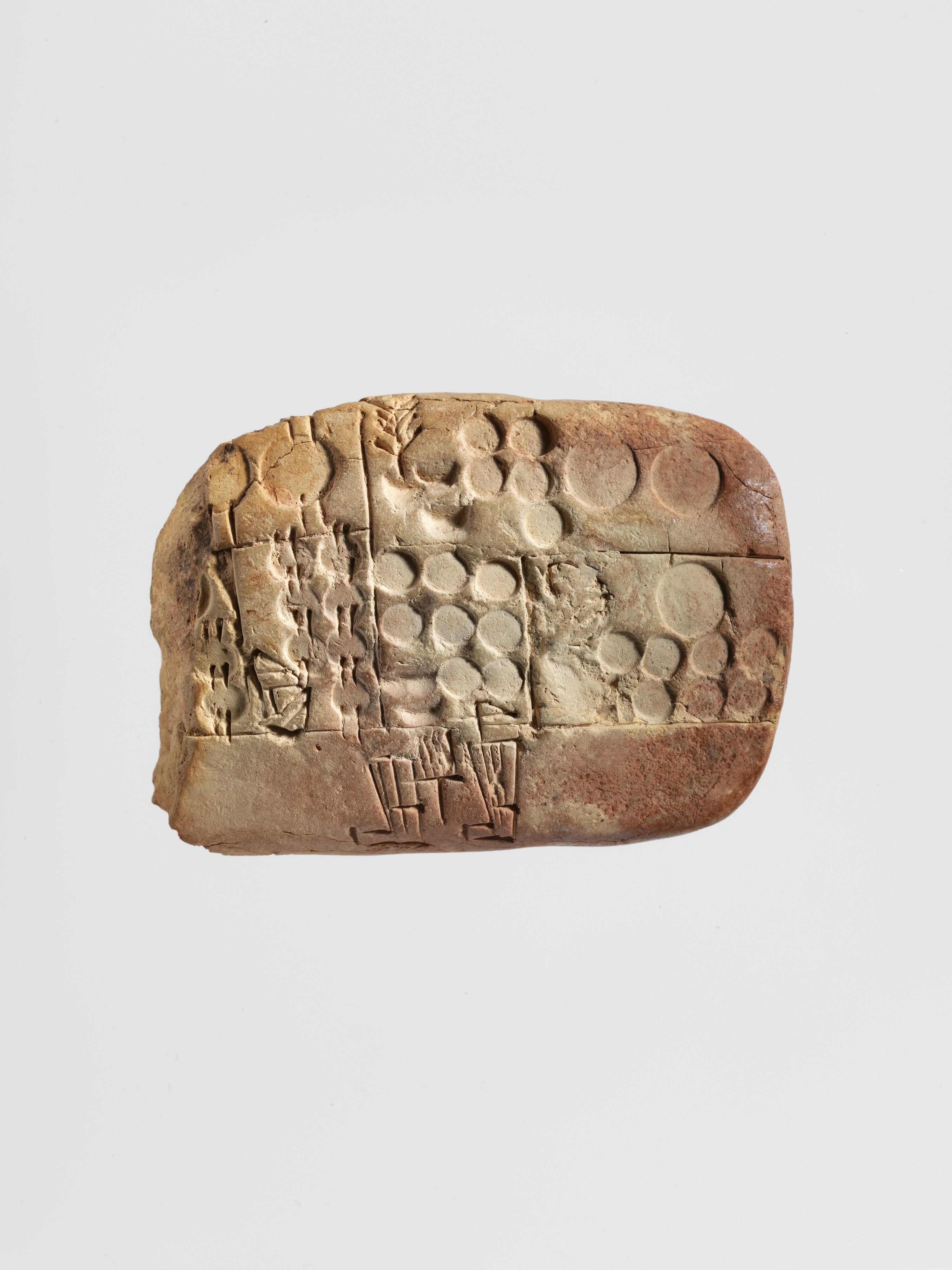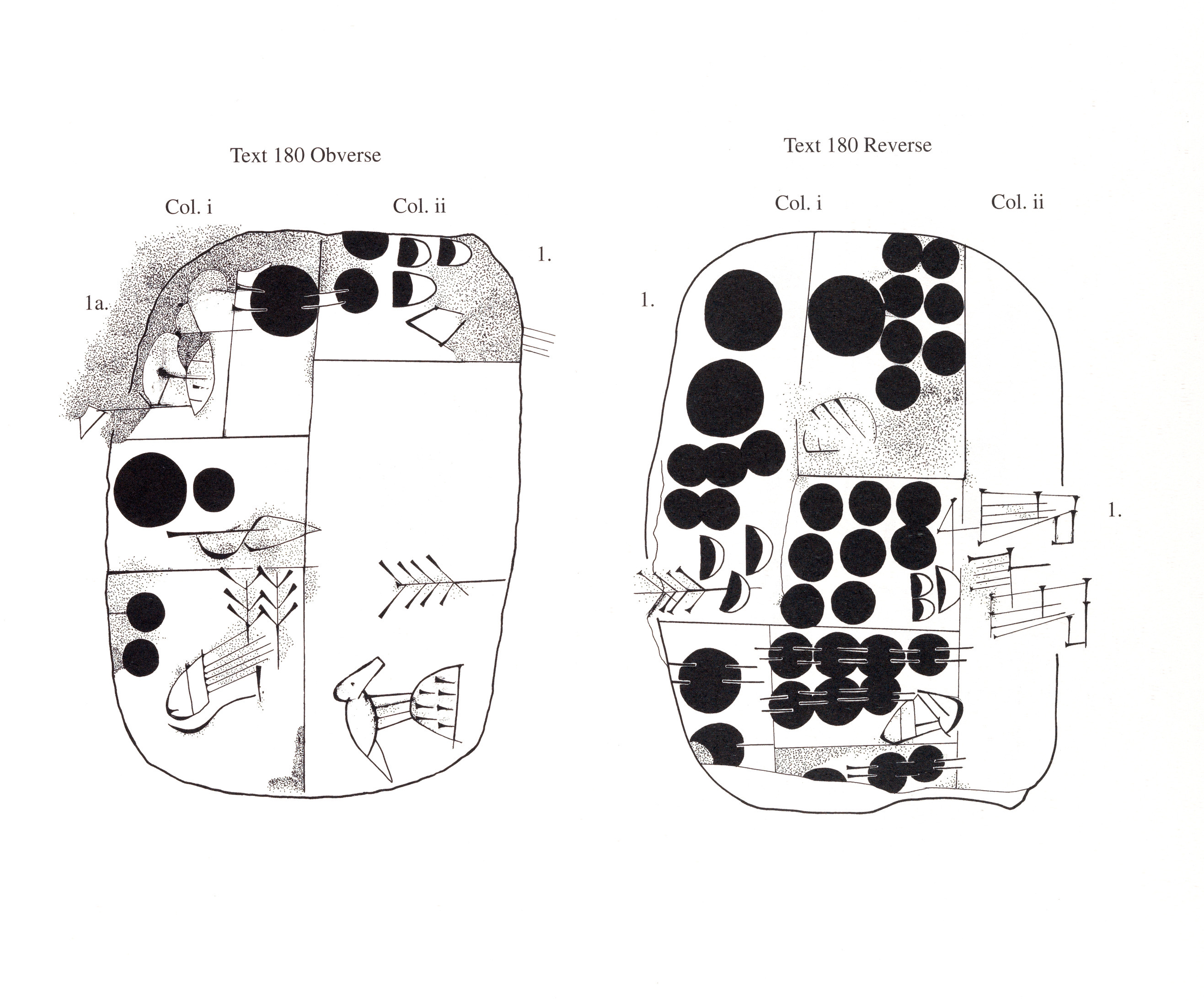Cuneiform tablet: administrative account concerning the distribution of barley and emmer
Not on view
Of the many legacies left by the ancient civilizations of southern Mesopotamia, the invention of writing is paramount. At the end of the fourth millennium B.C., written language developed in the region, first as pictographs and then evolving into abstract forms called cuneiform. The pictographs, like the ones on this tablet, are called proto-cuneiform and were drawn in the clay with a pointed implement. Circular impressions alongside the pictographs represented numerical symbols. Cuneiform (meaning wedge-shaped) script was written by pressing a reed pen or stylus with a wedge-shaped tip into a clay tablet. Clay, when dried to a somewhat hardened state, made a fine surface for writing, and when fired the records written on it became permanent.
Early writing was used primarily as a means of recording and storing economic information. This tablet most likely documents deliveries and distributions of grain such as barley and emmer wheat, although the absence of verbs in early texts makes them difficult to interpret with certainty.
Due to rights restrictions, this image cannot be enlarged, viewed at full screen, or downloaded.
This artwork is meant to be viewed from right to left. Scroll left to view more.






